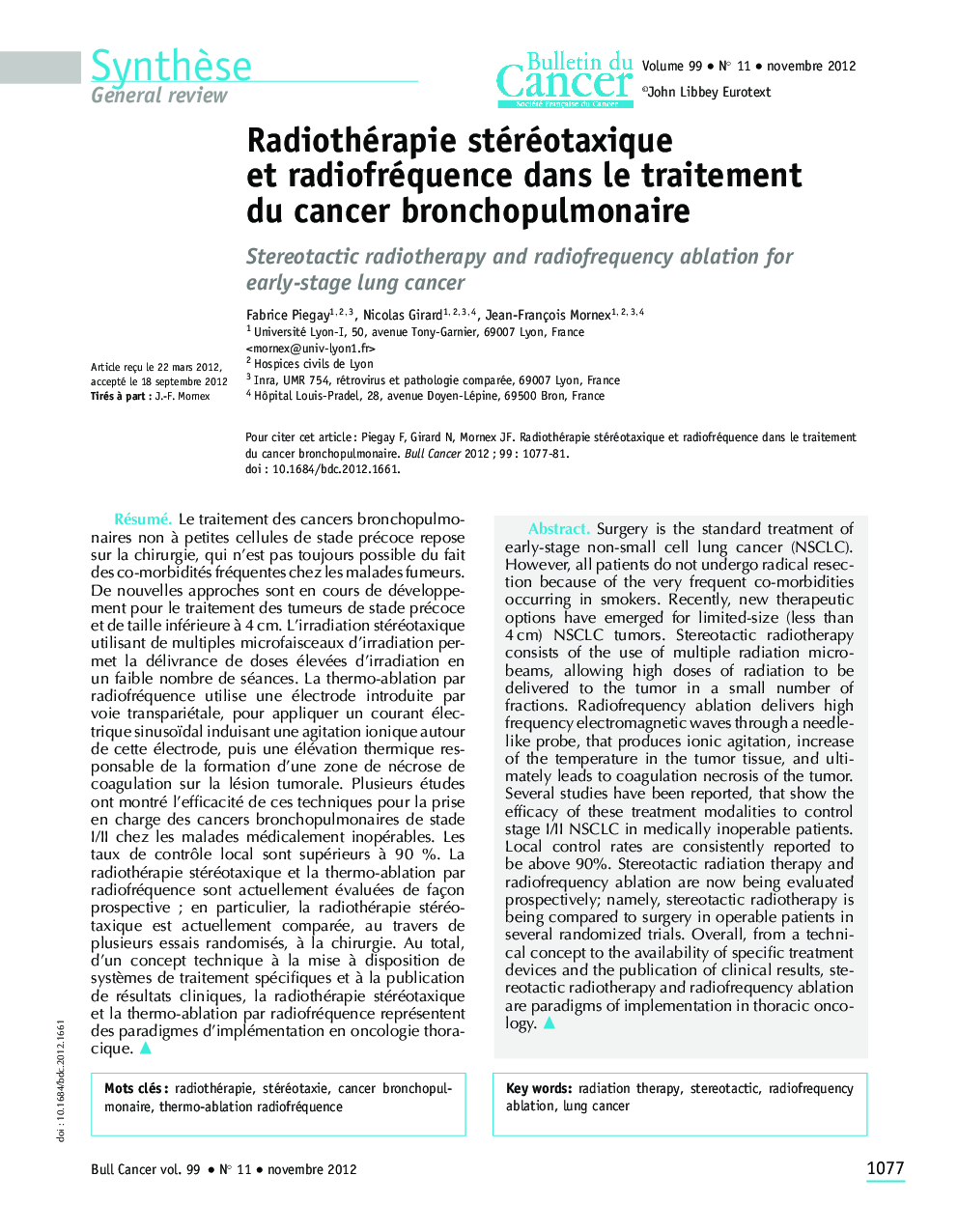| Article ID | Journal | Published Year | Pages | File Type |
|---|---|---|---|---|
| 3978943 | Bulletin du Cancer | 2012 | 5 Pages |
Abstract
Surgery is the standard treatment of early-stage non-small cell lung cancer (NSCLC). However, all patients do not undergo radical resection because of the very frequent co-morbidities occurring in smokers. Recently, new therapeutic options have emerged for limited-size (less than 4 cm) NSCLC tumors. Stereotactic radiotherapy consists of the use of multiple radiation micro-beams, allowing high doses of radiation to be delivered to the tumor in a small number of fractions. Radiofrequency ablation delivers high frequency electromagnetic waves through a needle-like probe, that produces ionic agitation, increase of the temperature in the tumor tissue, and ultimately leads to coagulation necrosis of the tumor. Several studies have been reported, that show the efficacy of these treatment modalities to control stage I/II NSCLC in medically inoperable patients. Local control rates are consistently reported to be above 90 %. Stereotactic radiation therapy and radiofrequency ablation are now being evaluated prospectively; namely, stereotactic radiotherapy is being compared to surgery in operable patients in several randomized trials. Overall, from a technical concept to the availability of specific treatment devices and the publication of clinical results, stereotactic radiotherapy and radiofrequency ablation are paradigms of implementation in thoracic oncology.
Keywords
Related Topics
Health Sciences
Medicine and Dentistry
Oncology
Authors
Fabrice Piegay, Nicolas Girard, Jean-François Mornex,
